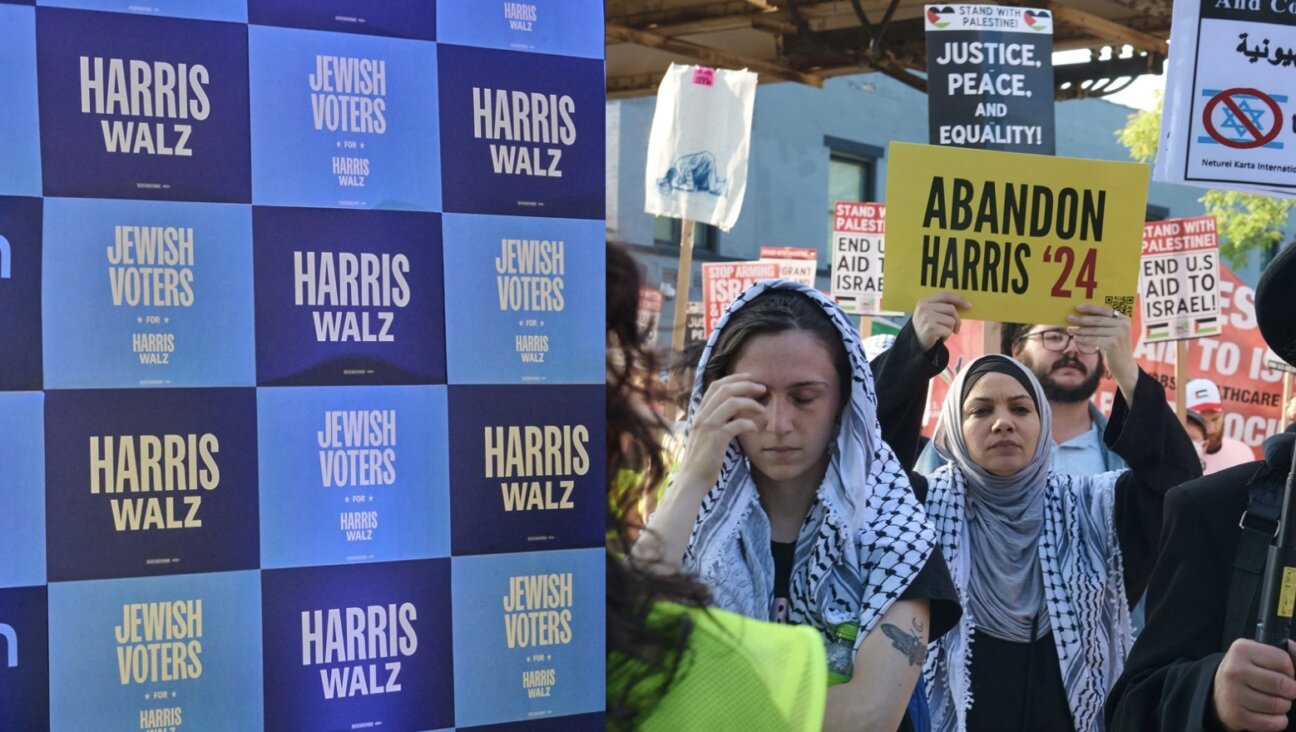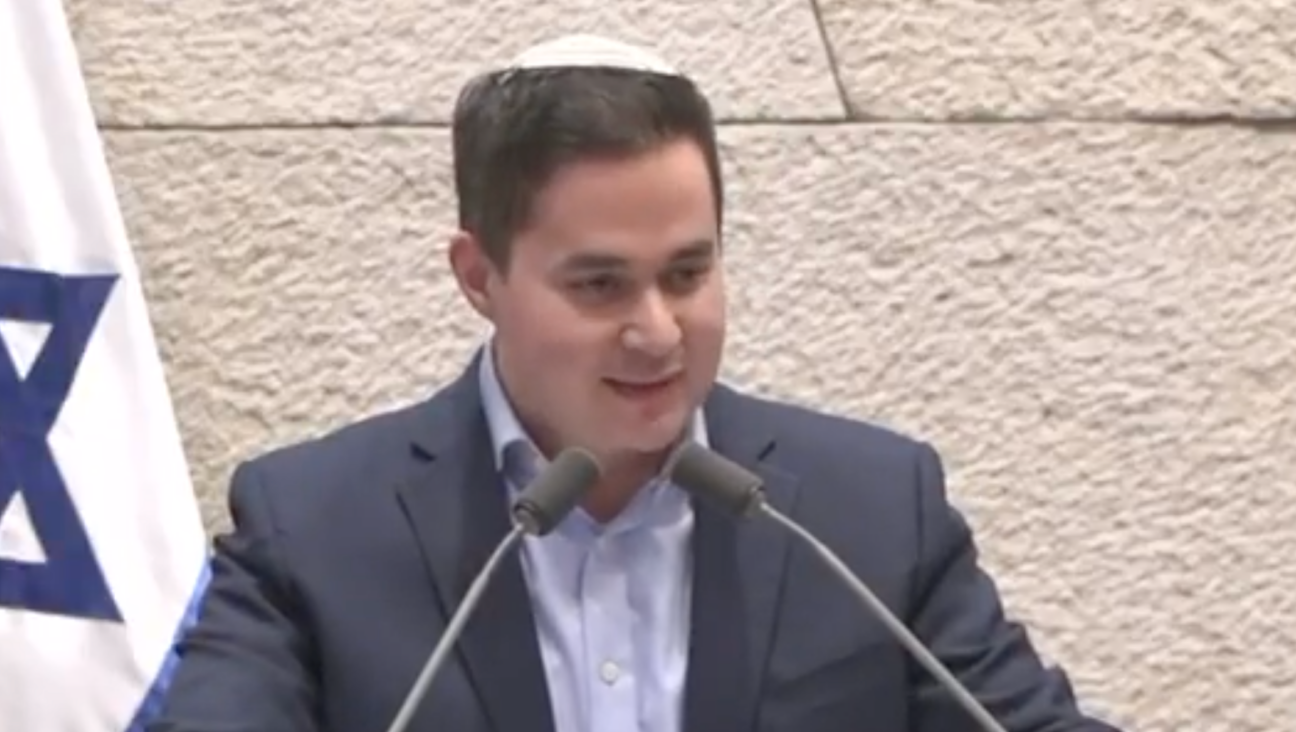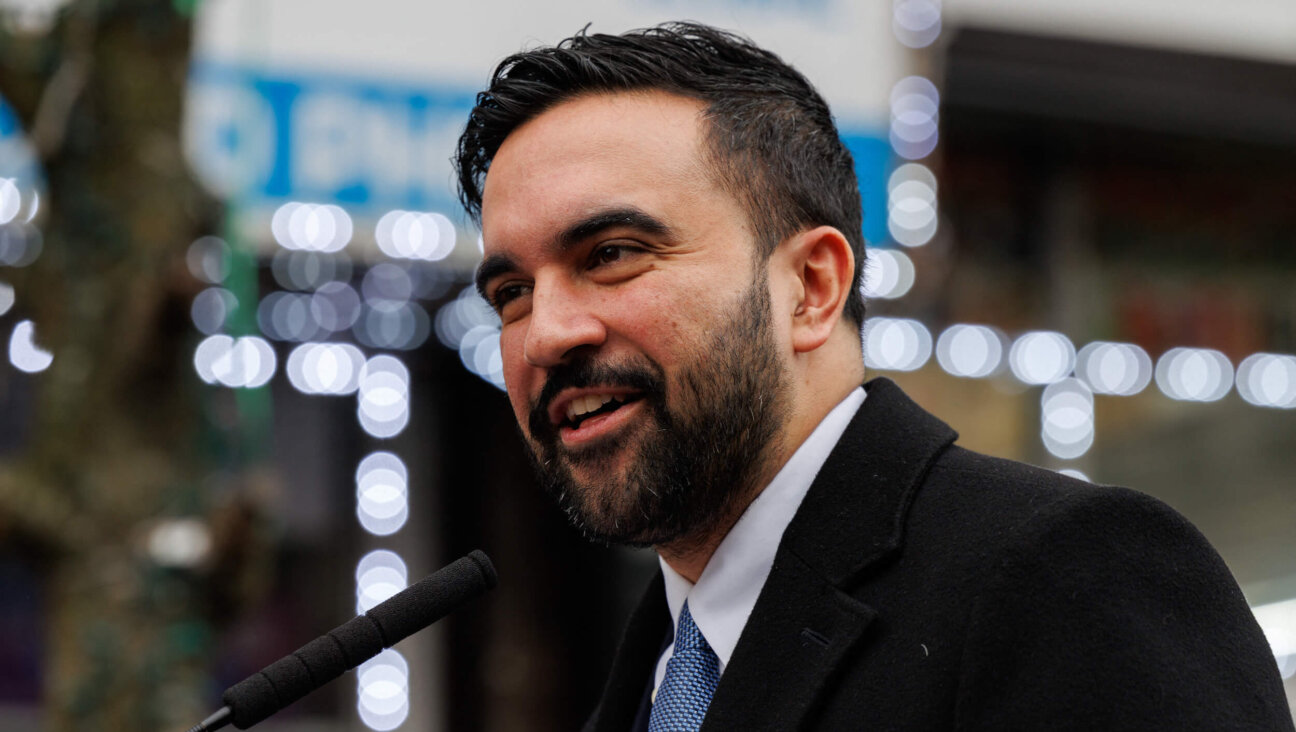What “Nobody Wants This” gets wrong about interfaith relationships today
Conversion is not the only path, and many mixed-faith couples raise Jewish children

(L-R) Adam Brody and Kristen Bell attend Netflix’s Nobody Wants This NY Fan Screening at The Paris Theatre on September 23, 2024 in New York City. Photo by (Photo by Jamie McCarthy/Getty Images for Netflix)
I enjoyed watching the Netflix series, “Nobody Wants This.” It’s funny and depicts some aspects of Jewish life in a refreshingly positive way.
But the messaging is terrible, starting with the title. What “nobody wants” is for the hot rabbi at the center of the show to continue his relationship with a sex podcaster, and the only reason given for why nobody wants it is because she’s not Jewish. This belies the reality of interfaith relationships in today’s society.
The idea is silly on its face, when 72% of non-Orthodox Jewish marriages are interfaith. Jewish families are generally welcoming to their children’s partners regardless of their identity.
The main reason the show offers for why “nobody wants” Rabbi Noah (Adam Brody) to be with Joanne (Kristen Bell) seems to be about their potential offspring. In the show’s first episode, Noah says that a couple consisting of a rabbi and a non-Jew would be “hard to pull off” because Jews need to repopulate; in Episode 8, Noah’s boss, the synagogue’s senior rabbi, says: “Everyone marries a goy, then there are no more Jewish children, and then our people become extinct.” (I hate the term “goy,” which is almost always used derisively)
But it’s demonstrably not true that interfaith relationships don’t produce Jewish children. The latest Pew report found that 69% of children from interfaith families are raised with some Judaism and that the percentage of adult children from these families who identify as Jewish is increasing. Suggesting that Noah or anyone else has to choose between loving a person from a different background and maintaining their Jewish identity and engagement is presenting a false choice.
The blatant hostility to interfaith relationships depicted in the series is also not realistic. There probably aren’t any synagogues left in North America where congregants would glare at a guest like Joanne at the end of a Shabbat service and openly call her a shiksa (another term I hate), as happens in a terrible scene in Episode 2. As the Glamour editor Jessica Radloff very aptly wrote: “This scene at the temple is the exact opposite of what we Jews are taught to do – welcome thy neighbor. At a time when antisemitism is at the highest levels we’ve seen since the Holocaust, scenes like this hit me hard.”
A running theme of the series, and a possible plotline of the just-announced Season 2, is whether Joanne will convert. Noah invites her to consider it, she does and at one point agrees, then later realizes that she’s not ready. Keren McGinity, a gender historian and scholar of intermarriage, called this a “groundbreaking” portrayal of “the decision-making process and journey,” and I agree.
But it’s wrong to hold up conversion as the “solution” to the supposed “problem” of interfaith marriage. While conversion was the path proudly chosen by the show’s creator, Erin Foster, the latest Pew report suggests that perhaps 6% of marriages involving Jews include a convert, compared to 42% of all Jews who are intermarried. In an interview with the Los Angeles Times, Foster said that she’s “felt more Jewish since I converted because of the lived experience.” Unconverted partners from different faith backgrounds can, and do, share that same lived experience.
The show uses stereotypes, caricatures and unrealistic behavior. But it raises a serious question: deep down, how do Jewish families and Jewish clergy and other Jewish leaders really feel about partners from different faith backgrounds? Wouldn’t they really prefer that partners of Jews be Jews?
The show’s exaggerations reflect an underlying reality: only 27% of people in intermarriages say they feel a great sense of belonging to the Jewish people. Feelings of exclusion stem from lingering negative attitudes about interfaith marriage, and is a very big obstacle to more interfaith families engaging in Jewish life.
As Esther Zuckerman wrote about the show in Time magazine, Joanne is “not sold on adopting” Rabbi Noah’s “culture as her own. And why would she be when it seems so unfriendly?” And Lior Zaltzman pointed out on Kveller, “it’s undeniable that the way some Jewish communities talk about dating non-Jews, and especially non-Jewish women, isn’t far off from what we see here. The line ‘shiksas are for practice’ is a real and painful one that many have heard.”
Rabbi Miriam Wajnberg of 18Doors, a group that advocates for and serves interfaith families that I founded, recently explained the components of belonging that Jewish organizations should address. A fundamental first step in any inclusion effort is to adapt attitudes so that partners from different faith backgrounds are viewed as having equal value and desirability as Jewish partners – and treated equally as well.
Several writers have expressed hope that Season 2 will focus on the conversion process. I’m looking for something different: Episodes that depict Noah and Joanne continuing their relationship, marrying and raising children with Judaism — while Noah gets promoted to lead a synagogue open to rabbis having partners of any cultural or religious identity.
And perhaps with Joanne taking an introduction to Judaism course to learn about this thing Noah loves so much, but without conversion as the goal. Who knows – after experiencing the beauty and meaning of Jewish life, and being embraced and made to feel included, she might convert later.
Rabbi Denise Handlarski, who is herself in an interfaith marriage, expressed hope in a piece in Hey Alma that we could “use this beautiful relationship portrayed on our TV screens as a way to move the cultural conversation in our own families, communities and synagogues forward.”
That’s the underlying messaging that the Jewish community needs – that when partners from different faith backgrounds are viewed and treated as equal, and thereby made to feel that they belong, more interfaith families will engage, and liberal Jewish life will thrive.

















